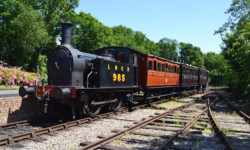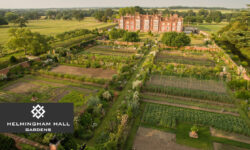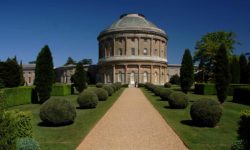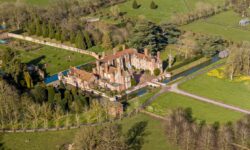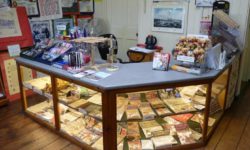Martello Towers are small forts that were first built at the beginning of the 19th Century along the coast in several countries belonging to the British Empire (and elsewhere in the world) in order to ward off an attack from Napoleon. Today, a number of these towers are still standing in various parts of Suffolk.
Martello towers – also known simply as ‘Martellos’ – are generally around 40 feet in height and have an unusual rounded shape with thick walls of solid stonework. The round, curved appearance of the Martellos was implemented to enable the garrison of soldiers and officers that inhabited them to have complete 360 degree views.
The wide roofs made an ideal stage to hold a cannon, which was placed on a pivot and so also to rotate 360 degrees. The thick, stone walls made the Martello a sturdy platform, and also highly resistant to enemy cannon fire. Some of the Martellos also had a moat around them as a further protection from attack. Often, a single doorway is found 5m off the ground that could only be accessed by a removable ladder.
British Martellos were typically 2 or 3 floors high, and a base of 24 men plus 1 officer occupied them. The men lived on the first floor which was divided into separate rooms for cooking and sleeping. There was a cistern within the fort to provide the men with water, which was refilled with rain via an internal drainage system that linked to the roof. A fireplace was built into a wall on the first floor for heating, bathing and cooking. The ground floor was used as a stock room, where supplies of ammunition plus food & drinking water were kept.
Origin of the Martello Towers
These curved forts were inspired by the Genovese defence system at Mortella Point in Corsica, which were first built in 1565. The Corsicans had originally built these towers on the coast of the island in order to protect their villages from pirates. The towers and their watchmen were paid for by local villagers, and whenever a pirate threat was seen, the watchmen would alert the villagers by lighting a fire on the tower’s roof. Although the pirate threat subsequently dwindled, the Genovese built a newer generation of circular towers that were used to ward off later foreign invasions.
In 1794, the fort at Mortella Point was overthrown by the land-based forces British after two days of heavy fighting. It is thought that the British were able to capture the fort because the Corsican’s cannons were largely aimed sea-ward and unable to change direction. Despite this overthrowing, the British were greatly impressed with the fort and felt that it could be a great asset if defended correctly, and so went on to imitate the design. However, they spelled the name wrong, using “Mortella” as “Martello”, which translates to “hammer” in Italian. When the British withdrew from Corsica in 1803, they blew up the tower – after attempting to do so for a very long time! – leaving it in an unusable state.
The British Martello Towers
The British Martello Towers were first built between 1804 and 1812, in order to defend England and Ireland from French attacks and invasion under the rule of Napoleon. Although a total of 103 towers were built in Britain, many of which were set along the coast from Sussex to Suffolk, their effectiveness was not tested at this time as the Napoleonic threat never occurred.
The destiny of the 103 towers is varied: some were demolished to make use of their masonry; some became victims of the sea and were washed away; some were destroyed during military testing of new rifle artillery; and finally, some Martello Towers returned to their original purpose of observational defence platforms during World War II.
Martello Towers Today
Today, the surviving Martello Towers can be found scattered across Britain, and a number of them can be found in Suffolk. Some have been restored and now function as museums and galleries, a few are privately owned as residences, and the remainder are derelict.
Four remaining Martello Towers can be found in Felixstowe – three of which are private and unused, and one has been converted into a private residential house.
One tower has been converted into a house in Hollesley, and a further two towers are unused in Bawdsey.
The largest remaining tower – which actually comprises of four towers joined together – is called Martello CC and is in the south of Aldeburgh. It is owned by Landmark Trust, and is available for rent.
